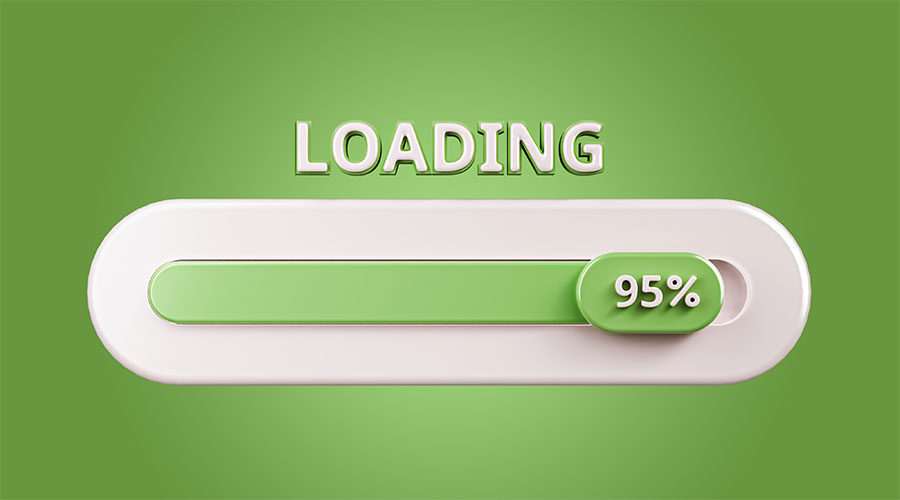Strategies for Faster Loading Times and Better Performance
Originally published: March 21, 2024 07:07:33 AM, updated: May 26, 2024 08:15:57 AM

Nowadays, optimizing website performance is a huge priority. As such, to ensure a seamless user experience, implementing strategies for faster loading times and better performance is essential. Thankfully, there is a lot you can do to kick off the process of optimizing your site!
Importance of website speed
Website speed is extremely influential on user satisfaction and SEO rankings. Slow-loading sites frustrate visitors and deter them from exploring further. In fact, even a one-second delay can lead to a significant increase in bounce rates!
Moreover, slow sites rank lower in search engine results pages, affecting organic traffic. For e-commerce sites, speed is especially critical as it directly impacts sales and revenue. A slow-loading website can lead to a poor shopping experience, leading you to struggle to reduce shopping cart abandonment.
Optimize image sizes
Optimizing image sizes for faster loading times and better performance is step one! Large image files can significantly slow down loading times, affecting user experience. By compressing and appropriately formatting images, you can ensure faster loading without compromising quality.
Utilizing lazy loading techniques also helps by loading images as users scroll down the page, reducing initial loading times.
Various tools and plugins can help automate the image optimization process, making it convenient for website owners. For example, tools like TinyPNG and ImageOptim are popular choices for compressing images without sacrificing quality.
Minimize HTTP requests
Minimizing HTTP requests helps optimize site performance. Each element on a webpage, including images, scripts, and stylesheets, requires an HTTP request individually, which slows down loading times.
Combining CSS and JavaScript files, using CSS sprites, and removing unnecessary elements effectively reduce HTTP requests.
As site design evolves, it's also important to periodically review and optimize these requests. It can be one of the most worthwhile projects when you notice signs it's time for a website redesign. Tools like Google's PageSpeed Insights can help identify areas for optimization and guide the process!
Utilize browser caching

Another strategy for improving website performance is utilizing browser caching. By setting expiration dates for resources and leveraging CDN caching, you can reduce loading times for returning visitors.
This means that once users access your site, their browser will store certain files, including images, scripts, and stylesheets. As a result, subsequent visits to your site will be faster.
This both enhances user experience and conserves server resources and bandwidth. Moreover, implementing browser caching is relatively easy and can be done through configuring cache-control headers. You can even do it using plugins for popular CMS platforms like WordPress!
Enable Gzip compression
Enabling Gzip compression is a simple yet effective way to enhance website performance. Gzip compression reduces the size of web files transferred between the server and the browser, resulting in faster loading times and reduced bandwidth usage. By compressing files like HTML, CSS, and JavaScript, Gzip minimizes the amount of data that needs to be transferred, making your site load quicker for visitors.
This optimization technique is supported by most modern web servers and browsers, ensuring compatibility across various platforms. Implementing Gzip compression involves configuring your web server to enable compression for specified file types. Many web hosting providers offer Gzip compression as a built-in feature, and for those who manage their servers, it's often just a matter of adding a few lines to the server configuration file!
Implement content delivery networks (CDNs)
Using content delivery networks (CDNs) is a smart move to enhance website performance. CDNs distribute site content across multiple servers worldwide. This reduces latency and improves loading times for users in different geographic locations.
CDNs ensure faster delivery of web pages, images, and other assets by caching content closer to the user. This both enhances user experience and boosts website reliability and availability.
Likewise, CDNs can handle spikes in traffic more effectively, ensuring your site remains accessible during peak times. As such, CDNs can improve your marketing efforts by providing faster loading times for marketing assets like images, videos, and landing pages, thereby increasing user engagement and conversion rates!
Reduce server response time
Reducing server response time is a big step in optimizing website performance. A slow server response time can significantly delay loading, leading to a poor user experience and higher bounce rates.
You can improve server response times and ensure faster page loading by optimizing server software, optimizing database queries, and allocating resources effectively. This enhances user satisfaction and boosts website retention, as visitors are more likely to stay on a site that loads quickly.
Choosing a reliable web hosting provider and keeping server software up-to-date is also helpful for maintaining optimal server response times.
Finally, monitoring server performance regularly and addressing any issues promptly can help prevent slowdowns and downtime.
Monitor and analyze performance

Monitoring and analyzing performance helps maintain a high-performing website.
Assessing key metrics such as page load times, bounce rates, and conversion rates regularly allows site owners to identify areas for improvement and make data-driven decisions. Tools like Google PageSpeed Insights, GTmetrix, and WebPageTest provide valuable insights into website performance and offer recommendations for optimization.
By analyzing performance data, website owners can identify trends, detect issues, and implement necessary optimizations to enhance user experience and improve search engine rankings. It's also required to monitor performance regularly and adapt strategies to ensure your site meets your audience's needs and expectations!
Proactively pursuing strategies for faster loading times and better performance
Effective strategies for faster loading times and better performance are necessary for success! By optimizing various aspects of your website, from image sizes to server response times, you can enhance user experience, boost search engine rankings, and drive greater conversions. So, stay proactive in applying these tactics, and you'll undoubtedly see the benefits of improved website speed and performance in your online endeavors.
Join over 130,000 SEO and Google Ads experts. We provide a community to help you engage and learn from industry experts and influencers. Join Now
What if your entire business could run itself — and your work hours got shorter?